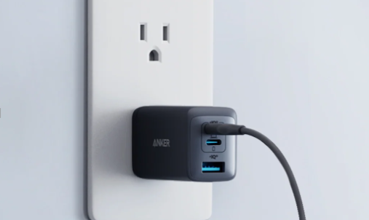Best Practices for DCIM Implementation in 2025

Implementing Data Center Infrastructure Management (DCIM) is critical for improving data center operations. An effective DCIM setup increases visibility, efficiency, and scalability. However, to prevent frequent errors, the procedure must be carefully planned and executed. This article discusses best practices for DCIM deployment in 2025, including concrete actions and errors to avoid. Organizations that follow this advice may ensure a seamless transition to a more efficient and controllable data center infrastructure. Whether updating current systems or beginning from scratch, knowing the fundamental components of DCIM deployment is critical to attaining operational excellence.
What Are the Key Steps in a Successful DCIM Implementation?
Assessing Infrastructure and Setting Clear Objectives
Start by carefully assessing your data center’s present hardware, software, and operating procedures. Establish clear objectives for the DCIM implementation, such as cutting energy use, improving asset management, or strengthening capacity planning, and identify areas that need improvement. Specific goals will direct the choice of suitable DCIM products and provide guidance for the implementation plan as a whole. To make sure that the goals meet the demands of all users and are in line with organizational objectives, include stakeholders from different departments. By putting these goals in writing, the project has a plan, and success criteria are established. A successful DCIM implementation starts with a thorough evaluation and well-stated objectives.
See also: How EVs Benefit from Liquid-Cooled Systems?
Choosing the Right DCIM Software Vendor
The DCIM provider you choose will determine how well your deployment goes. Evaluate vendors based on their expertise, product characteristics, scalability, and customer service. Request demonstrations to assess the functionality and use of their goods. Consider the vendor’s ability to interact with your existing systems and their commitment to ongoing development and support. To find out how well the vendor performs in similar situations, go through case studies and references. By offering comprehensive training and timely support, a vendor can ensure long-term success and significantly ease the transition. A smooth and effective deployment is made possible by carefully selecting a DCIM provider.
Planning for Integration and Scalability
Effective DCIM installation requires meticulous planning for integration with current systems and future scalability. Check that the DCIM solution you choose can integrate easily with your existing hardware, software, and network infrastructure. Create a staggered rollout strategy that allows for testing and modifications before the full-scale implementation. Consider future expansion and guarantee that the DCIM system can expand without major overhauls. Address data migration techniques to ensure data integrity during the change. Collaborate with the IT and facilities teams to ensure that the DCIM deployment is consistent with organizational procedures and workflows. A well-thought-out integration and scaling strategy guarantee that the DCIM system stays functional as your data center grows.

What Mistakes Should You Avoid During DCIM Deployment?
Underestimating the Complexity of Data Migration
Data migration is a difficult procedure that, if not handled correctly, may cause serious problems during DCIM deployment. Underestimating its complexity may lead to data loss, inconsistencies, and protracted downtime. It is critical to undertake a complete assessment of current data, identify any issues, and create a clear transfer strategy. This strategy should contain data validation techniques, backup strategies, and contingency plans for dealing with unexpected issues. Engaging skilled people to manage the move may assist in reducing risks and assure data integrity. Additionally, evaluating the migration process in a controlled environment prior to full deployment might help identify concerns early on. Recognizing and resolving the complexities of data transfer is critical to a successful transition to a new DCIM system.
Ignoring Stakeholder Training and Adoption
Neglecting stakeholder training and acceptance may significantly reduce the efficacy of a DCIM deployment. Without sufficient training, users may fail to fully exploit the system’s potential, resulting in underperformance and dissatisfaction. It is critical to provide a thorough training program geared to various user roles to ensure that all stakeholders understand how to properly engage with the DCIM system. Encourage feedback and provide continuing assistance to answer problems and queries. Promoting a culture of continuous learning and exhibiting the advantages of the DCIM system may help increase user engagement and adoption. Involving stakeholders early in the implementation phase and having open communication lines helps to increase acceptance. Prioritizing stakeholder training and engagement is critical for maximizing the benefits of a DCIM system.
Skipping Ongoing Maintenance and Optimization
Ignoring the requirement for continual maintenance and optimization might jeopardize the long-term viability of a DCIM deployment. Regular system upgrades, performance reviews, and process changes are required to meet changing data center needs. Create a timetable for regular maintenance chores such as software upgrades, hardware inspections, and data accuracy evaluations. Monitor system performance data to find areas for improvement and make adjustments as necessary. Engage with the DCIM provider for assistance and to learn about new features or best practices. Continuous maintenance and optimization guarantee that the DCIM system is successful and in line with company objectives.
Conclusion
Implementing a DCIM system by 2025 requires thorough planning, stakeholder participation, and a dedication to continual development. Organizations may set themselves up for success by properly examining infrastructure, choosing the correct vendor, and preparing for integration and scalability. It is also crucial to avoid typical errors such as underestimating data transfer complexity, failing to provide stakeholder training, and skipping ongoing maintenance. A well-executed DCIM system improves operating efficiency, enables scalability, and gives useful information about data center performance. Embracing these best practices ensures that the DCIM system delivers long-term value and aligns with the organization’s strategic objectives.




